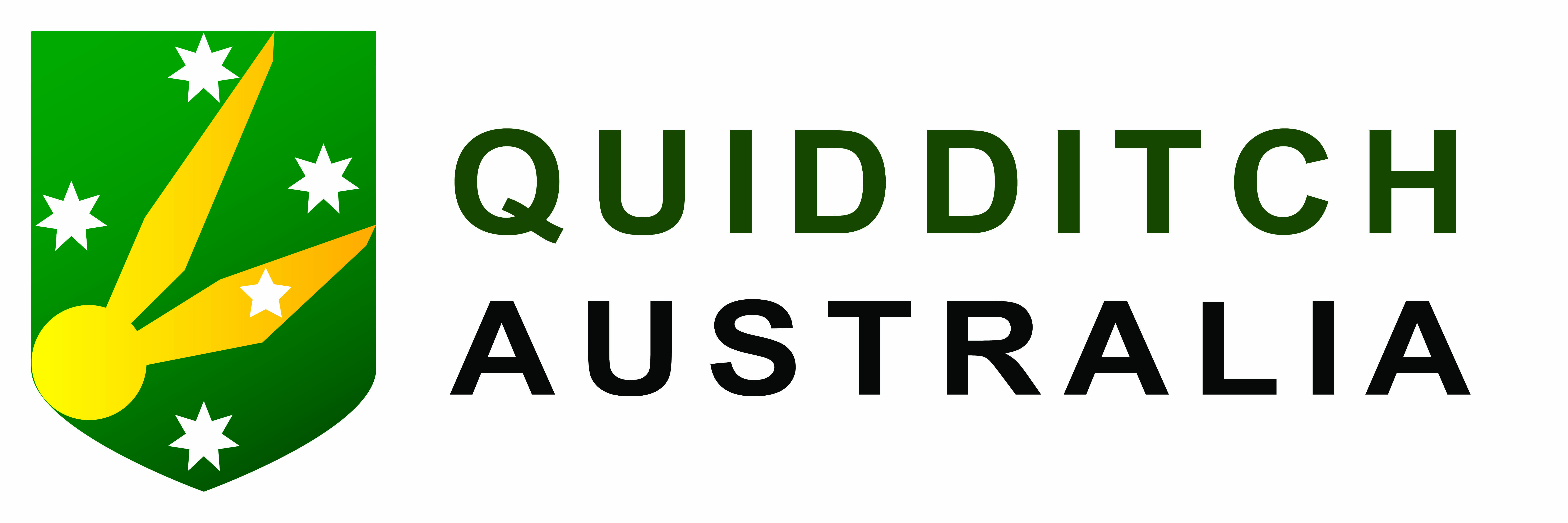Gender in Quidditch: “Women on the Australian Team, 2016-2018”
By Sophie Fitch, ANU Owls
The issues facing women in quidditch ought to be considered through the same lens as any disenfranchised group. Battling lack of opportunity of women in quidditch, as in the wider world, can simply only be remedied by supporting females in all roles and training them to do them effectively.
This was exemplified in the 2016 Australian team, of which I was privileged to attend every single selection camp, all but one training, and every World Cup game. I remember seeing captain James Mortensen at the very first selection camp taking the female chaser candidates aside and explaining to them the importance of their roles on the team (despite common conceptions about female chasers at the time). On this team, he explained, they would be treated like any other chasers – they would be supported and trained as heavily, and thus they would have the same expectations placed upon their shoulders. This leadership team, he explained, wanted to change the way that female chasers were treated. Traditionally, female chasers were shoehorned into the role of pass-receiving, and their opportunities to perform outside that role were limited. Hence, when female chasers attempted other roles, their performance was generally poor, leading to a self-perperpetuating cycle that further cemented their narrow role as pass-receivers. The 2016 Australian team would change that – the girls would be given the opportunity to break out of that role, and the leadership would ensure that they were supported and nurtured through that process. I saw this support play out in a stark way when, during a training camp, one of the male players was outlining the structure of a Zone defence and unironically described the smallest hoop as the ‘female hoop’. The leadership stepped in to explain that this was not the way this team was doing things, and that the defensive hoops were to be assigned to the person most physically suitable for defending them – regardless of gender. Countless small acts of correction like this, combined with the overarching expectations and support of the Australian female chasers, ultimately led to a team that was cohesive, in which every member was expected to pull their weight and did so due to their rigorous training and support. This was the team that secured Australian victory at the 2016 World Cup.
As the quidditch world watched on in the 2016 grand final, the U.S. lost the World Cup because they did not utilise all of their players to the best of their abilities. While I saw time after time, an open U.S. female chaser waiting for a pass that wouldn’t come – our girls were setting screens, making drives and finishing alley-oops as completely integrated members of the team. There was no question as to the validity of their spot on the team and the field, there was no hesitation in the Australian team’s faith in our female chasers. Those goals that our girls scored or facilitated (and that the U.S. girls didn’t get the chance to) made the difference between our win and our loss.
However, shedding the gendered terms of this discussion, we can consider the 2016 Australian team as having taken a group of disenfranchised, under-utililised players that felt like (and were often treated like) liabilities – and made a team effort to have them reach their potential. While many would consider that that effort was a success, it would be foolish to think that the 2016 team’s integration of disenfranchised players was total. Bolstered by some atypical individuals, the 2016 female beaters were largely left to their own devices. However, female beaters in the current wider Australian community are the least integrated group, with ‘male’ and ‘female’ beater roles still generally accepted synonyms for more active and passive roles. This issue has come to the forefront in the 2018 team, with our female beaters notably missing out on field time in our ‘tough’ games against the U.S.
In 2018, we can blame the draw all we like – but we were not planning on losing to the U.S. at all, let alone twice. We went to the World Cup to win, we believed we were going to win. And despite various assertions that the leadership team did what they had to, to ‘play the best team they could’, this claim is no excuse for the fact that our female beaters got no field time in the U.S. games. Why bring players to the World Cup that you do not trust to play on the toughest games? I cannot believe that the answer has to do with the individual beaters themselves, but with the systemic, widespread ideas about what female beaters can do, that were perpetuated by the leadership of this team. Wherein 2016 the female chasers were supported above and beyond to reach their potential within the team, in 2018 our performance shows that our female beaters did not receive this same support, and the whole team suffered for this neglect. I doubt this attitude was intended or conscious on the part of the leadership – we can never forget that these people are volunteers that give more of themselves than most of us to our sport and our country. This doesn’t mean, however, that their ideas are immune from age-old and outdated gender expectations, or that their actions are immune from critique. This short reminder of how the Australian team lead by Gibson and Mortensen came to win in 2016, I think, needs to be acknowledged and adopted anew if Australian quidditch is going to excel to the heights that the world expected of us. Any team that seeks to represent the community needs to actively manage the deficits in that community, and this management of disenfranchised players is the definitive difference between our success and our failure.
